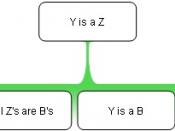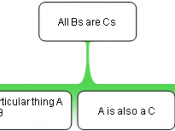Three Logical Fallacies
The focus of this paper will be to discuss logical errors known as fallacies. If an argument contains a fallacy, then the conclusions generated by the argument may not necessarily lead to the truth. Some fallacies are created unintentionally, but sometimes they can be intentionally created to trap or lure a reader into believing false conclusion. Some unscrupulous writers or speakers use fallacies as a tool to purposely mislead the intended audiences.
To narrow the scope of this paper, it will be focused on three types of these logical fallacies and give an example of each type of fallacy. The three fallacies that will be discussed for this paper are material fallacies, fallacies of relevance, and verbal fallacies (W. S. Sahakian, and M. L. Sahakian, 1966, p. 12). Generally when presenting an argument both premises and presuppositions are used. Premises are the starting points for an argument that can be proven, while on the other hand presuppositions are the underlying assumptions that can not be proved or disproved.
Presuppositions are inevitable because of human finiteness and bias (D. E. Chittick, 1997, pp. 92-93). Since the presuppositions cannot be proved or disproved, they must be taken on faith. It is important to identify these presuppositions in order to distinguish them from the premises (A. Stephen Richardson, unknown, para. 4).
Material fallacies deal principally with a premise and its evidence. When the premises of an argument, or its evidence, contain material fallacies, the conclusion is not sufficiently proven. "Material fallacies arise out of the fabric (or 'material') used to express an argument"
(M. Vos Savant, 1996, p. 81). The following describes an example of a material fallacy. People often use this fallacy of insufficient evidence to draw a conclusion from only a few unrepresentative examples. "Off the shelf...


